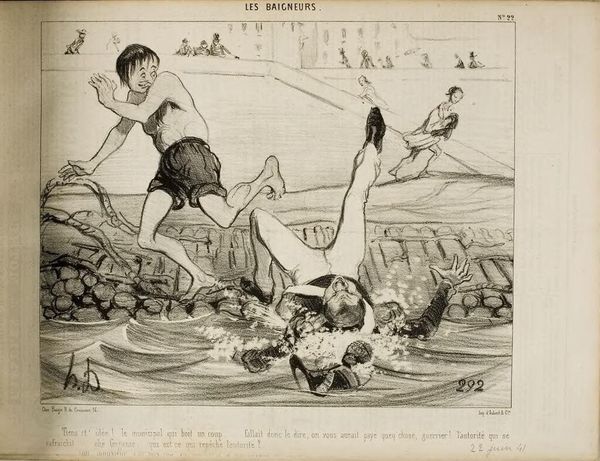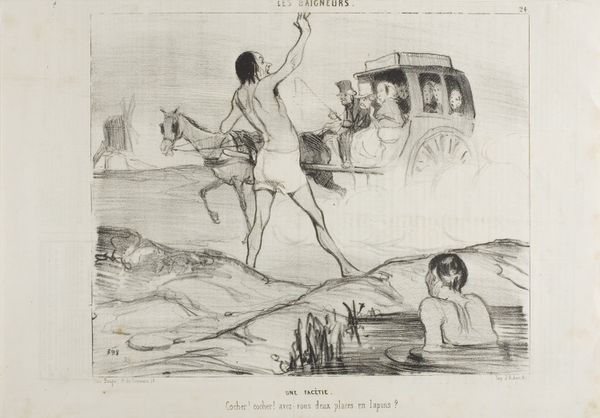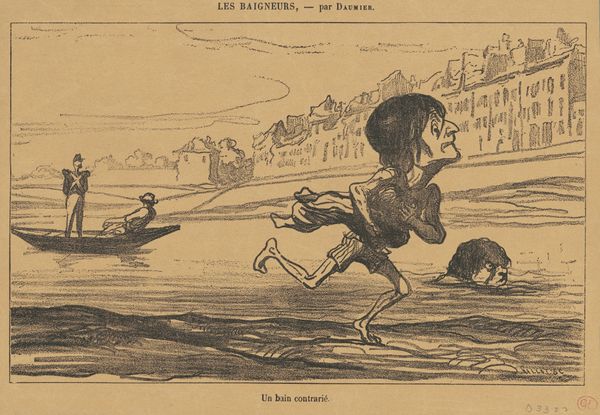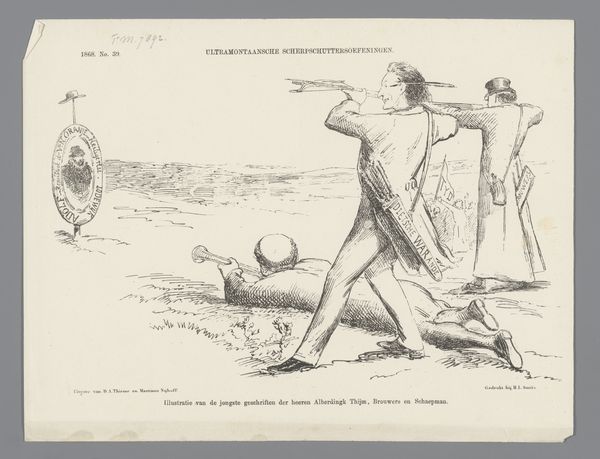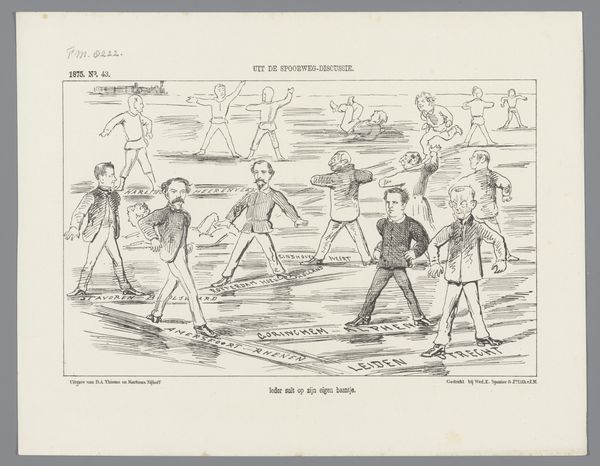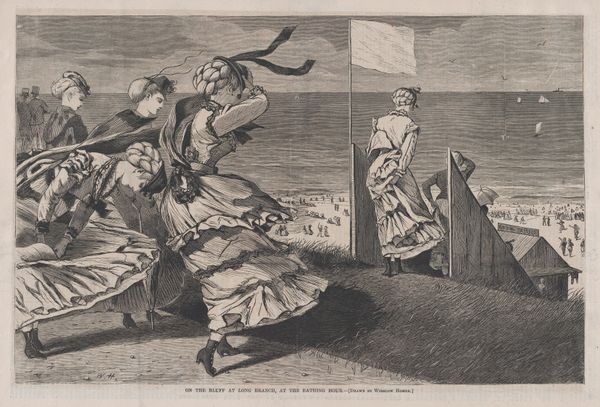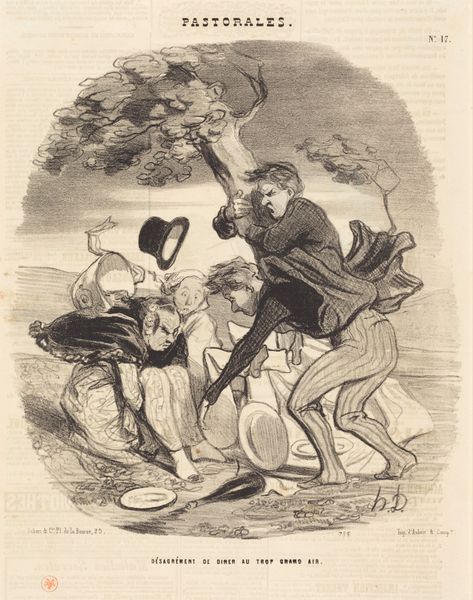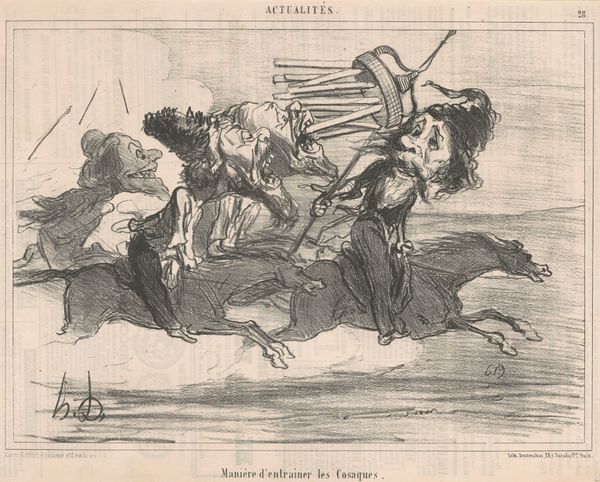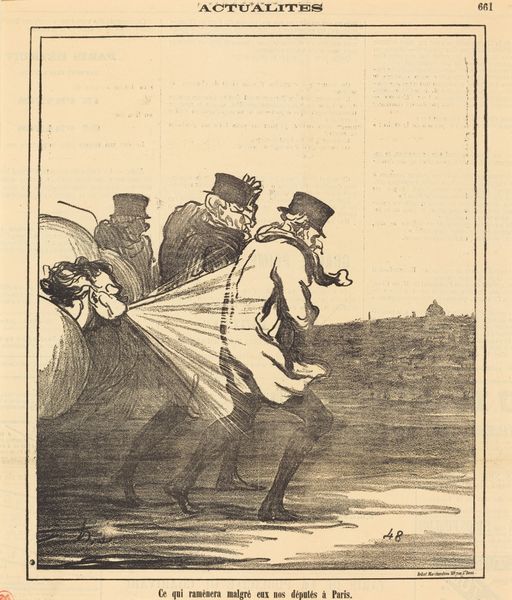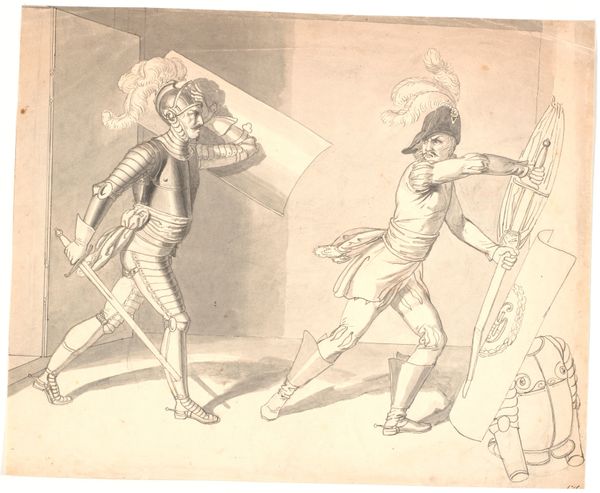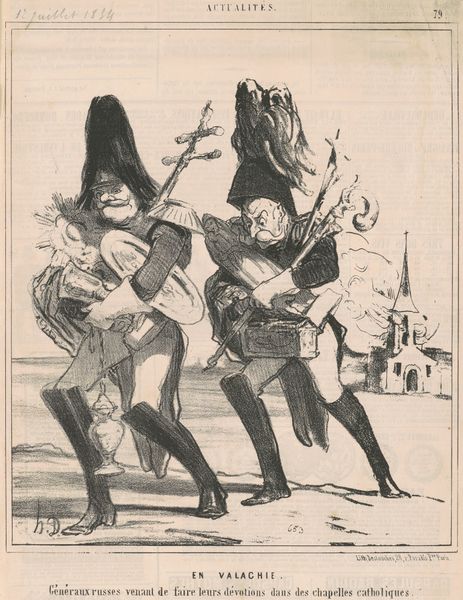
lithograph, print
#
lithograph
# print
#
caricature
#
social-realism
#
romanticism
#
19th century
#
genre-painting
Dimensions: image: 21.5 x 27.2 cm (8 7/16 x 10 11/16 in.) sheet: 24.5 x 31.5 cm (9 5/8 x 12 3/8 in.)
Copyright: National Gallery of Art: CC0 1.0
Curator: Here we have Honoré Daumier’s lithograph, “File…Moello! Vla le municipal!”, created in 1839. It’s a frenetic scene, wouldn't you say? I feel this sense of scrambling energy—a desperate rush for something, or perhaps away from something… Editor: Yes, exactly! There’s an almost visceral quality to it. The eye is immediately drawn to the dynamism of the figures; their lean, almost gaunt bodies and elongated limbs contrast comically with the relatively static background figures observing them from a higher vantage point. Curator: Daumier was the master of social commentary, using caricature to expose the absurdities of Parisian life. The title gives it away— these are bathers, likely escaping some authority figure or perhaps even the limitations of their poverty, since the establishment charges "4 sous" for a wash. The romantic spirit, right? It's a mad dash for cleanliness, or liberty! Editor: Absolutely, the inscription lends critical insight into the broader social stratification. But note Daumier’s compositional technique—the strategic placement of light and shadow, particularly on the foreground figures, guides our focus. And his economical use of line creates an immense sense of movement. Look at how their toes barely touch the ground as they move, the garments clutched so desperately to the chest... Curator: He wasn't just making jokes, you know? These guys weren’t elite types lounging about in leisure. He depicts figures in media res - caught in the middle of something. What they do are very small slices of very human endeavors, of just trying to get by! Editor: It’s an incredibly astute observation. This print is far more than just humorous. The implied narrative creates questions regarding class, societal expectations, even governmental reach in ordinary lives. This is evident by looking closer at the gazers atop; note their uniformity in expression—critical scrutiny—as well as dress, versus the scant, unidealized depictions of the subjects fleeing in front. Curator: And there you have it! Editor: Indeed. It's a print that encourages us to question and analyze power dynamics within our communities.
Comments
No comments
Be the first to comment and join the conversation on the ultimate creative platform.

